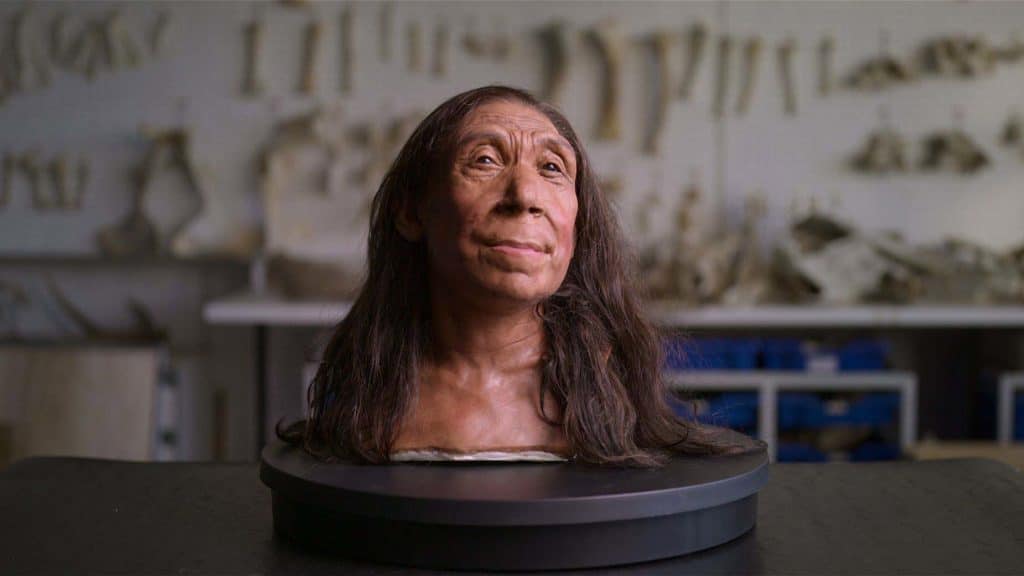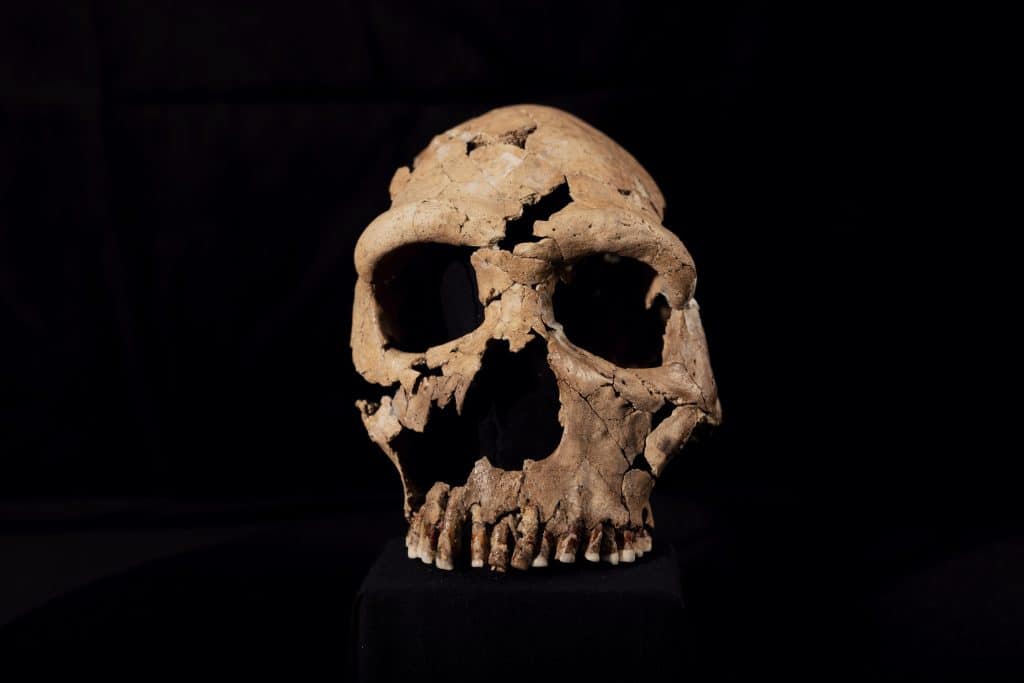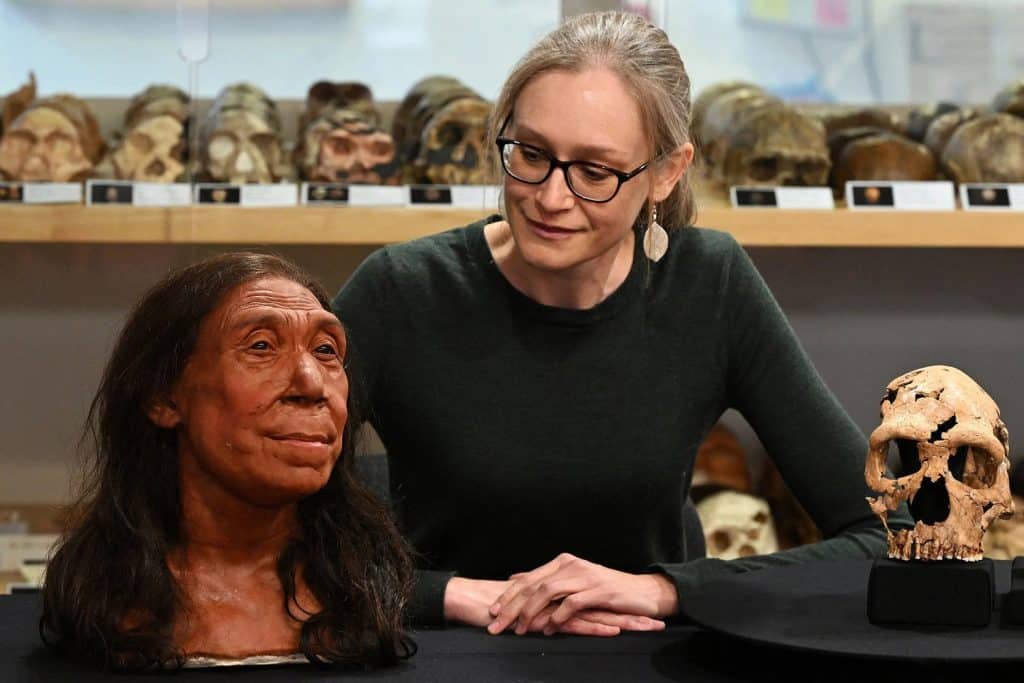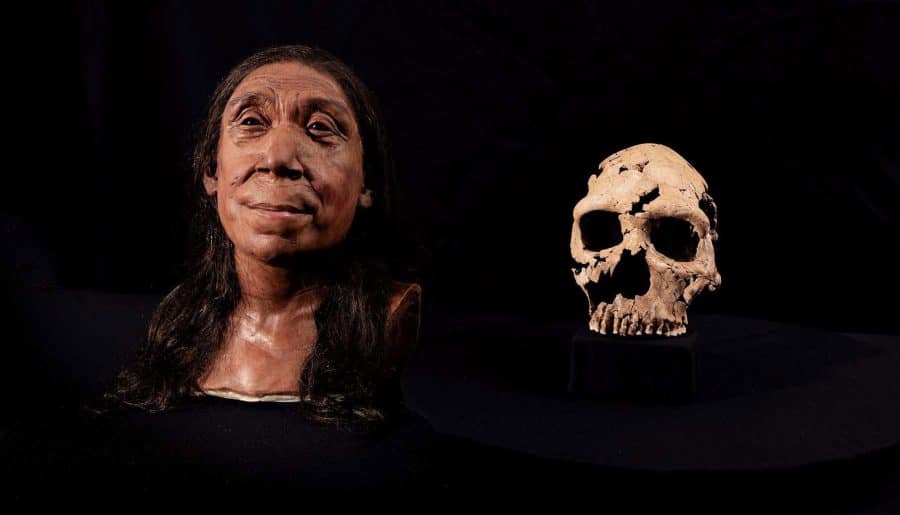Around 200,000 years ago, a group of ancient humans called Neanderthals or Homo neanderthalensis lived in Eurasia (Europe and Asia). But they mysteriously became extinct around 40,000 years ago and were replaced by Homo sapiens or modern-day humans.
Researchers have studied Neanderthals’ physical appearance and found that they are similar to humans. However, they have more prominent brows and protruding faces with shorter and wider ribs.
They also have a larger brain and nasal cavity, which allows them to breathe better in the cold, dry environments where they live.
Recently, a team of archaeologists from Britain reconstructed the face of a 75,000-year-old Neanderthal woman whose skull was discovered in 2018 in a cave in Iraqi Kurdistan.

The Neanderthal woman was named Shanidar Z after the Shanidar Cave, where she was found. It was believed that Shanidar Z was approximately 40 years old when she died.
In 1960, an American archaeologist named Ralph Solecki discovered the remains of ten Neanderthals, including the lower part of a female’s skeleton.
The body of Shanidar Z, which scientists consider as the most well-preserved of this century, was found buried behind a rock in the center of a cave. This discovery makes her the fifth body identified in the group, buried over several hundred years.
Shanidar Z was buried lying down under a big standing stone with her skull shattered into 200 pieces. The skull was also flattened to a thickness of 0.7 inches, possibly due to a rockfall shortly after her death.

Image credit: G. Barker
According to Prof. Graeme Barker, who was in charge of the new excavations at Shanidar, the skull was flat, almost like a pizza.
Researchers think that the place where Neanderthal remains were discovered has a large vertical rock that they may have used as a marker for the burial site.
This shows that our ancestors might have a better understanding of death than we previously assumed. Scientists believe the rock was a navigation tool that helped Neanderthals find the same location to bury their deceased.
Over the last six years, scientists have pieced Shanidar Z’s skull together. They used diluted glue to strengthen the bones and put them back together freehand.

Image credit: BBC Studios/Jamie Simonds
Dr. Emma Pomeroy, the Cambridge palaeo-anthropologist who uncovered Shanidar Z, describes it as challenging, like solving a complex 3D puzzle with high stakes. The fragments were very soft, like a biscuit dipped in tea, making the task even more difficult.

Image credit: BBC Studios/Jamie Simonds
The skull reconstructed earlier was scanned once more and then printed in 3D. This was done to help two paleoarchaeologists in their field, Adrie and Alfons Kennis, to add layers of muscle and skin to the skull and reveal its face.
The recreated face suggests that Neanderthals and humans were not so different from each other during their lives, even though their skulls looked quite different.

Image credit: Justin Tallis
The face also supports the theory of interbreeding between Neanderthals and humans, which is why many people today carry Neanderthal DNA.







